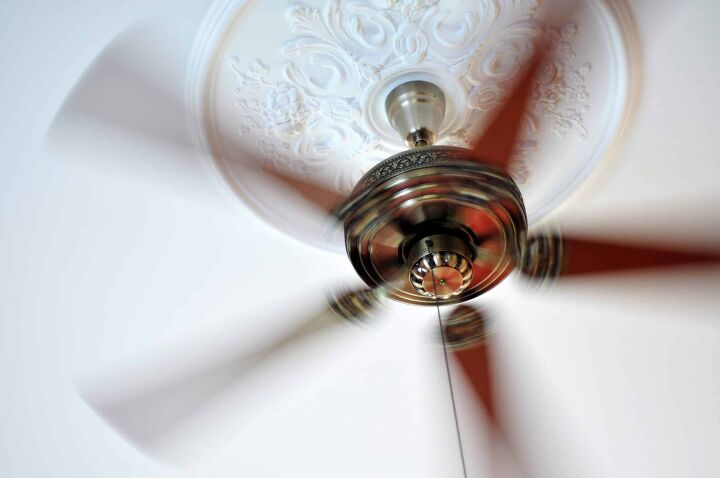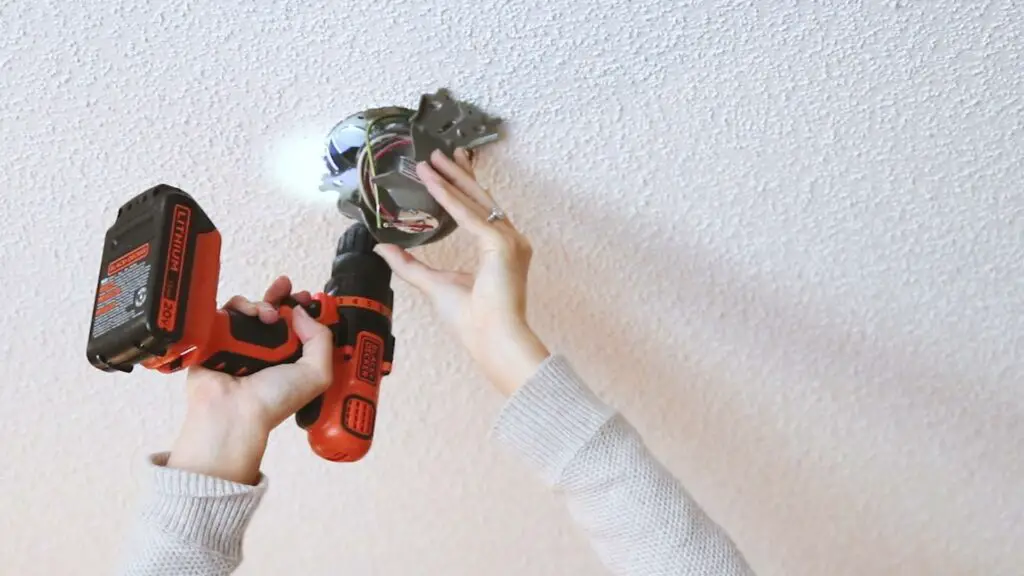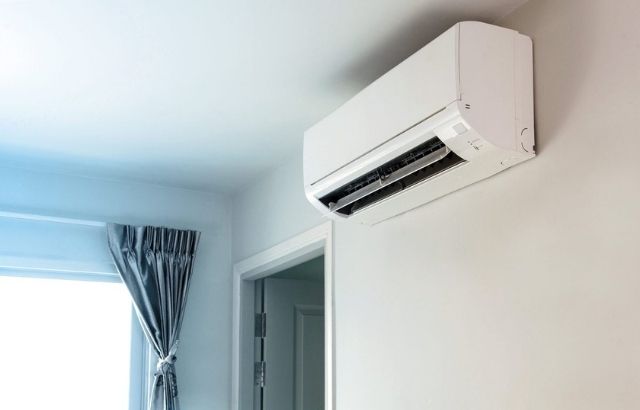Ceiling fans are a popular addition to bedrooms, patios, and living rooms. When you want to add a ceiling fan, the hardest step is to install the ceiling fan without any existing wiring. This article will discuss how to install a ceiling fan without existing wiring.
How to Choose a Place to Install a Ceiling Fan

Before installing a ceiling fan, you must first answer two major questions: where will it be installed, and how will it be powered. Whether you’re installing a new fan, replacing an old one, or upgrading an old appliance, there are several factors to consider.
Fans that are already in place or that have been retrofitted. It’s easy to decide where to put a new fan or light fixture if you’re replacing an existing one.
Carefully disassemble the lamp, starting with the light bulbs and gorgeous glass. To completely remove the light, unscrew the screws that bind it to the junction box, and then unhook the plastic wiring connectors.
If you’re lucky, the electrical cabinet may be mounted directly on the ceiling beam. As a result, you can attach the fan to the beam to give the necessary support. If the electrical box is between two beams, you’ll need to add a support bar to keep the fan in place.
When installing new fans where no fittings are available, you have two alternatives for structural support: attach the fan directly to the ceiling beam or add a support beam between the beams.
The most difficult task will be deciding on the optimum power source, which usually necessitates the least amount of drywall cutting. Homeowners with wiring skills can install a new wire from any electrical access point in the attic if they have attic access.
But if it is not possible, the wire should be run from the closest available outlet or switch, which is normally a wall switch in the room where the fan is mounted. This will usually necessitate cutting small holes in the walls to wire the corners.
How to Install a Ceiling Fan without Existing Wiring

If you’re installing a ceiling fan that doesn’t have existing wiring, you’ll have to run wires to connect it to your power source. If you don’t know what you’re doing, wiring can be difficult; many individuals would rather have a professional handle it for them.
Small rooms and areas around your home can sometimes be difficult to light, and the hassle and expense of installing wired lighting can add another stressor to our already hectic lives. Using a ceiling light without wiring to brighten these little spaces is a smart way to avoid wasting time and money installing wired lights.
Space to craw
Installing a ceiling light without wiring means you don’t need to call an electrician. This space is often overlooked when it comes to lighting. You can safely access the crawl when you need it with an overhead light.
Cabinets
It would help if you went to toilets almost every day, so lighting is critical. Since the ceiling light is wireless and battery-operated, it won’t increase your electricity bill, even if used a lot.
Showers
People of all ages need to have well-lit bathrooms and showers to avoid tripping or falling. Installing a wireless ceiling light in a dark shower room is easy to increase safety.
Pantry
Our cupboards, like our wardrobes, get used to everyday life. The Wireless Ceiling Light is a simple and energy-efficient addition to provide comfortable lighting in one of the most commonly used areas of the home.
Hangars
These areas are often separate from the main house, making it even more difficult to install wired lighting. Get affordable and comfortable lighting with a wireless ceiling light?
How to Install a Ceiling Fan Where No Wiring Exists

You can hire a professional electrician to install a ceiling fan when no wire or fittings exist because this technique necessitates the installation of new wiring.
The processes for installing a ceiling fan are explained here.
Turn off the power to the circuit.
The first step is the most important in the entire process. Turn off the circuit breaker that powers the ceiling fan’s control circuit. This will prevent electrocution and make wiring the fan to the switch much easier.
Decide where you want the ceiling fan to be installed.
Ceiling fans can weigh anywhere from 15 to 50 pounds, so be sure you choose a spot with enough support joists. A ceiling fan that is not correctly mounted to the ceiling can be dangerous.
Place the electrical box in its proper location.
The installation of the electrical box can commence once the fan’s location has been determined. The electrical box can be fastened onto a support joist if one exists at the fan’s preferred location. You’ll need a spacer and a saddle to support the fan if you have two support joists in the desired place.
The processes for installing an electrical box that requires a spacer and saddle are as follows:
- Cut a hole between the two support joists in the ceiling.
- Attach the electrical box to a fan bracket and push it through.
- Follow the manufacturer’s directions for attaching the brace to the support joists.
- Place a saddle on top of the splint and ready to wire through it.
Connect the fan to the wire.
You can choose or install a wall switch that will control the ceiling fan.
The wiring from the switch to the ceiling fan installation position must be routed. Duct tape can be used to pull the new wiring through the walls and up to the location where the new fan will be mounted.
Place your new ceiling fan in place.
The new ceiling fan will be constructed and mounted according to the manufacturer’s instructions once the wiring has been fitted. Reconnect the circuit and test the fan to ensure it is working properly.
Frequently Asked Questions
How much does it cost to install an existing wireless ceiling fan?
A new ceiling fan installation will bring a cool new look to your home, the price is between $ 150 and $ 360 without complicated wiring, and the average project cost for most homeowners looking for windbreaks is around $ 250.
Is it possible to install a ceiling fan without the help of an electrician?
In a closed case, the fan can be installed by anyone. A qualified electrician is required to install the electrical wiring. Because nothing will change in the branch circuit, replacing the ceiling fan can be done without the help of an electrician.
Are there wireless ceiling fans?
Unlike traditional ceiling fans, Smart ceiling fans work by Wi-Fi or Bluetooth, rather than a power wire or cabling in the wall. This means that you can remotely monitor and schedule their work according to the set parameters and schedule, even when you are away from home from your iOS or Android device.
How to install a wireless ceiling light?
To install a ceiling light without wiring, look for removable pendant lights. These are simple lamps that hang from the ceiling by a string and plug into a nearby outlet.
Do ceiling fans add value to your home?
Ceiling fans are the perfect addition to any home. Ceiling fans in bedrooms, living rooms, and family areas will instantly increase the value of your property.
How much does a ceiling fan installation cost?
A ceiling fan installation costs $75 to $150 on average, with most homeowners spending $150 to 350 on materials and labor. Installing a ceiling fan costs between $50 and $80 per hour and takes 1.5 to 2 hours on average.
Conclusion
Ceiling fans will be a great addition to your home. They add comfort and are also an attractive feature that enhances the appearance of the room. An experienced licensed electrician will make installation safe, efficient, and hassle-free.




